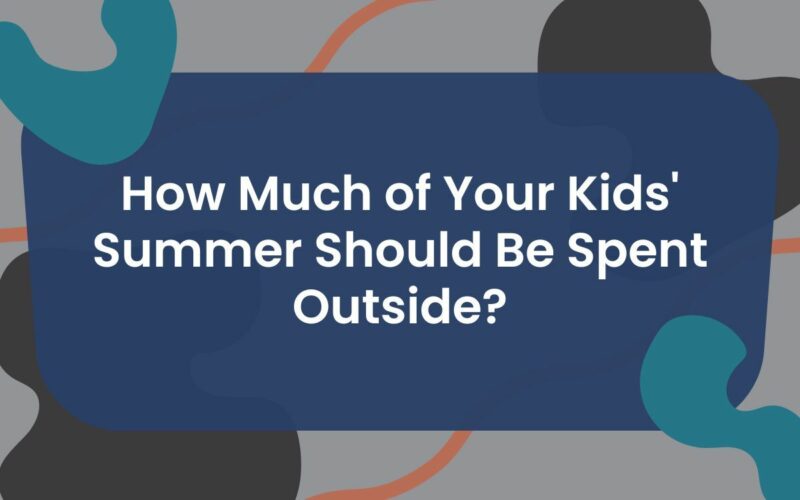With summer plans in the works, here’s a key question: How much time should your kids spend outside?
When summer comes and the weather warms, I give my son as much playtime outdoors as indoors. Younger generations don’t spend as much time outside, thus missing out on the fun we used to have. How much time should your children be spend outside?
Here’s how I approach outdoor time:
How Much Outdoor Times Is Good?: Kids need time outdoors, whether in the backyard, local parks or playgrounds. Being outside lets you smell the fresh air, listen to the birds and be with nature for a while.
I try to give my son about three hours outside a day. Morning playtime is crucial in the summer because the temperatures can get scorching in the afternoon.
There is a place for indoor time, as children need a place to rest, eat meals and shelter from bad weather. However, it’s hard to beat vitamin D from the sun and the benefits of going outside.
Research shows young children benefit from being outside because it aids their focus. A 2020 Early Child Education Journal says outdoor play helps boys stay on task when learning occurs afterward.
How Can Parents Support Their Children’s Outdoor Time? Saying kids should play outside is great, but what can parents do to help? Here are a few ways I help my son enjoy his time outdoors and stay safe.
Let Them Imagine
It’s natural for parents to desire involvement in every facet of their kids’ lives. However, letting them have unstructured time outside is beneficial.
Let your kid’s imagination run wild on the playground as they pretend to be a firefighter or a pirate. Children are more creative than you might think, so letting their minds loose is a great way to associate playtime with fun memories.
Keep Them Hydrated
Playing outside for long periods means your child will need an occasional break, so I keep a kid-friendly thermos with cool water whenever he needs a drink. Sometimes, I have to remind him to take a break or else he might forget.
Kids need about 5 cups of water daily if they’re between 4 and 8 years old. The 9 to 13 crowd will need closer to 7-8 cups as their bodies grow and need more fluids.
Children who don’t drink enough water could become tired more quickly and experience headaches, so keep a bottle nearby at all times.
Apply Sunscreen
My son isn’t a huge fan of sunscreen, but I make him wear it when the UV index is worrisome. Even cloudy days put people at risk for sunburn, so reapply sunscreen every three hours to stay safe. Put it on before they go outside and make sure they stay covered.
Your kids might not understand now, but they’ll appreciate you caring for their skin. Get at least SPF 30 for the best protection.
Practice What You Preach
Kids look up to us as role models, so practice what you preach when you enforce rules. Applying sunscreen to my son is easier when he sees me do it first because he wants to be like me.
The same goes for other activities like riding bikes. Experts say helmets reduce serious head injuries by 60%, so it’s another requirement before leaving the house.
Always wear a helmet in front of them, even if you only ride up and down the street. Fun designs will make them more eager to wear it each time, especially as they’re still learning.
Find Friends for Fun
Playing alone or with me is fun, but getting social interaction in the summer is crucial. I have a reliable group of friends with kids around my son’s age, and I set up playdates throughout the week.
Kids playing with others their age helps their creativity and social skills, which is necessary as my son gets closer to elementary school. I love taking him and a friend to the park, the nearby lake or anywhere else where sunshine and fresh air are plentiful.
Jack Shaw is the senior lifestyle writer at Modded with and a single father with a special interest in navigating the ins and outs of being a parent. As fathers, the work we put in isn’t always recognized, but it’s absolutely essential to the health and well-being of our children. You can find more of Jack’s work in publications like Tiny Buddha, Daddy’s Digest, Parent.com and more.









